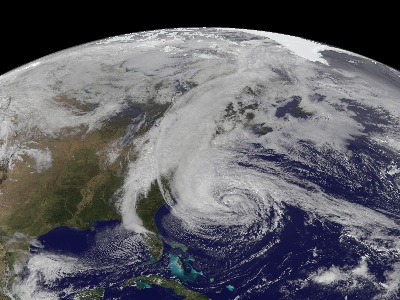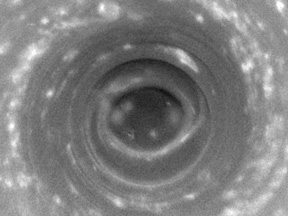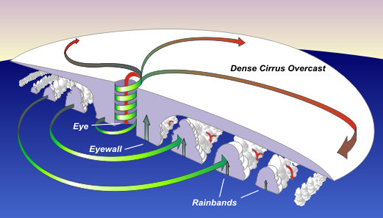This illustration shows how air moves through the eye, eyewall, and rainbands of a hurricane. Air spirals up in the eyewall and drops down through the eye.
Click on image for full size
Courtesy of NOAA National Weather Service
The Eye of a Hurricane
At the center of a fierce tropical storm, there is a small area where the weather is calm, the sky is clear, and the winds are just light breezes. This area is called the eye of the storm. The eye looks like a circle when viewed from above, put it is shaped more like a cylinder.
Just outside the eye is the eyewall. This is the most violent part of a hurricane. The eyewall is made of thunderstorm clouds. In the eyewall there are very strong winds. Warm, moist air is pulled into the storm along the eyewall. It cools and forms more cumulonimbus clouds.
Last modified March 12, 2009 by Lisa Gardiner.
You might also be interested in:

Wind is moving air. Warm air rises, and cool air comes in to take its place. This movement creates the winds around the globe. Winds move at different speeds and have different names based on their speed.
...more
Hurricanes form in the tropics over warm ocean water. The storms die down when they move over land or out of the tropics. At the center of the rotating storm is a small area of calm weather and clear skies
...more
Thunderstorms are one of the most exciting and dangerous types of weather. Over 40,000 thunderstorms happen around the world each day. Thunderstorms form when very warm, moist air rises into cold air.
...more
Cumulonimbus clouds belong to the Clouds with Vertical Growth group. They are also known as thunderstorm clouds. A cumulonimbus cloud can grow up to 10km high. At this height, high winds make the top
...more
A tornado begins in a severe thunderstorm called a supercell. Scientists aren't exactly sure why, but air coming into the storm begins to swirl and forms a funnel. The air inside the funnel spins so fast
...more
If you wanted to go someplace warm for a vacation, would you choose the South Pole? If you lived on Saturn you might! Saturn's South Pole is the warmest place on the ringed planet. Watch out for the weather,
...more
At the center of a fierce tropical storm, there is a small area where the weather is calm, the sky is clear, and the winds are just light breezes. This area is called the eye of the storm. The eye looks
...more













